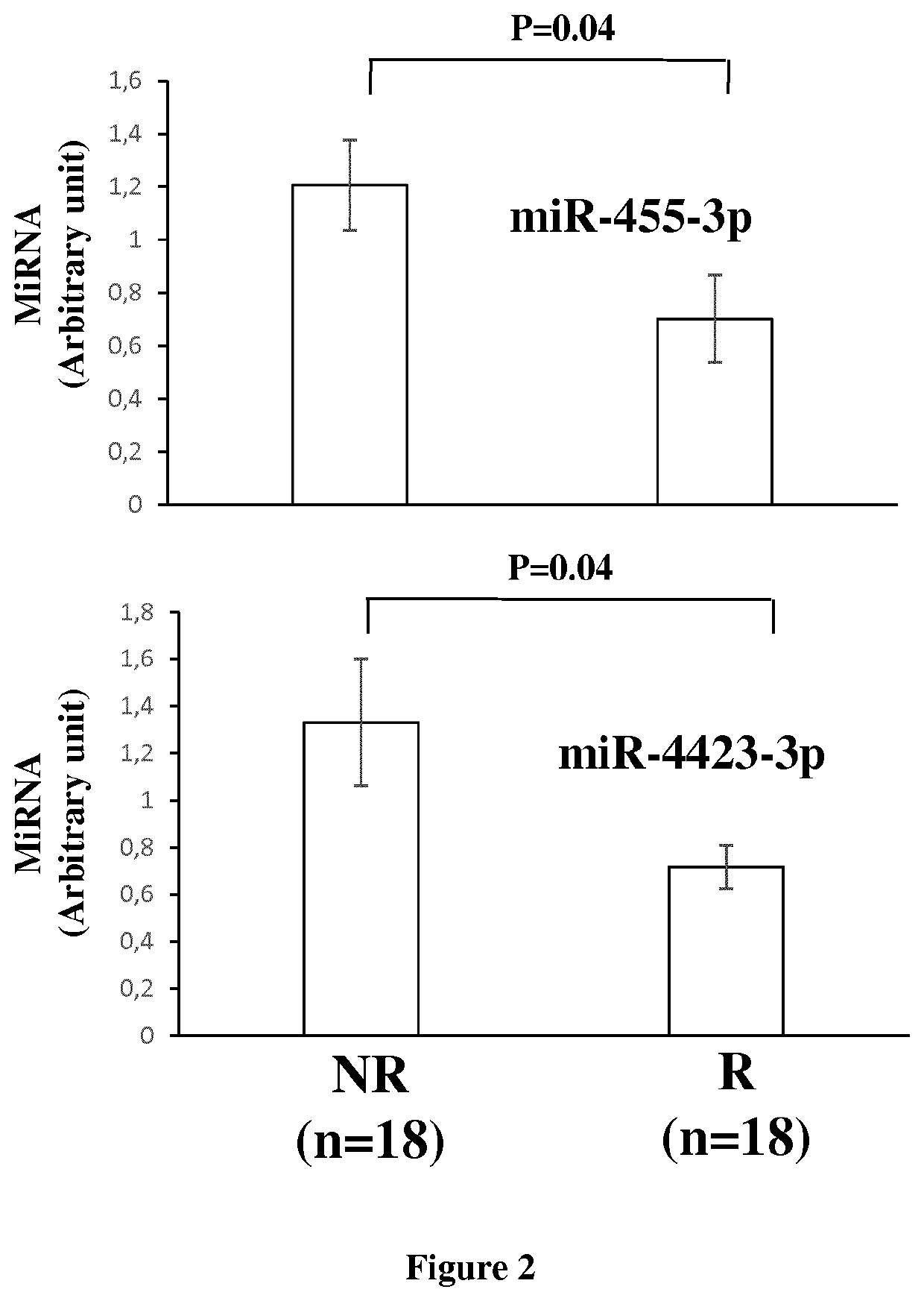Methods for assessing pregnancy outcome
- Summary
- Abstract
- Description
- Claims
- Application Information
AI Technical Summary
Benefits of technology
Problems solved by technology
Method used
Image
Examples
example 1
[0065]Material & Methods
[0066]Study Design and Sample Collection
[0067]The study group comprised 40 infertile patients (mean±SEM, age: 37.1±0.9 years) with repeated implantation failures (RIFs).
[0068]All patients were recruited after written informed consent. These patients were under hormone replacement therapy (HRT) awaiting for replacement of cryopreserved after history of RIFs (≥3) after cryopreserved embryo replacement. HRT regimen involved either a daily oral dose of 6 mg oestradiol (Provames 2 mg) or a progressive dose (2 mg / day during 3 days, 4 mg / day during 5 days and then 6 mg / day) on day 1-28 combined with 400 to 800 mg per day of progesterone (Utrogestan 200 mg) from days 15-28. All patients were recruited for endometrial receptivity appreciation during the theoretical implantation window between Pg+5 to Pg+8 (Pg, progesterone) using the Win-Test (1, 24) and thawed-cryopreserved embryo replacement according to the Win-Test result.
[0069]For miRNome profiling, twenty RIF pa...
example 2
[0085]Material & Methods
[0086]Study Design and Sample Collection
[0087]The study group comprised 15 infertile patients (mean±SEM, age: 36.3±1.6 years) with repeated implantation failures (RIFs).
[0088]All patients were recruited after written informed consent. These patients were under hormone replacement therapy (HRT) awaiting for replacement of cryopreserved after history of RIFs (≥3) after cryopreserved embryo replacement. HRT regimen involved either a daily oral dose of 6 mg oestradiol (Provames 2 mg) or a progressive dose (2 mg / day during 3 days, 4 mg / day during 5 days and then 6 mg / day) on day 1-28 combined with 400 to 800 mg per day of progesterone (Utrogestan 200 mg) from days 15-28. All patients were recruited for endometrial receptivity appreciation during the theoretical implantation window between Pg+5 to Pg+8 (Pg, progesterone) using the Win-Test (1, 24) and thawed-cryopreserved embryo replacement according to the Win-Test result.
[0089]Then, we compared the miRNome profil...
example 3
[0105]Material & Methods
[0106]Study Design and Sample Collection
[0107]The study group comprised 10 infertile patients (mean±SEM, age: 37.3±2 years) with repeated implantation failures (RIFs).
[0108]All patients were recruited after written informed consent. These patients were under hormone replacement therapy (HRT) awaiting for replacement of cryopreserved after history of RIFs (≥3) after cryopreserved embryo replacement. HRT regimen involved either a daily oral dose of 6 mg oestradiol (Provames 2 mg) or a progressive dose (2 mg / day during 3 days, 4 mg / day during 5 days and then 6 mg / day) on day 1-28 combined with 400 to 800 mg per day of progesterone (Utrogestan 200 mg) from days 15-28. All patients were recruited for endometrial receptivity appreciation during the theoretical implantation window between Pg+5 to Pg+8 (Pg, progesterone) using the Win-Test (1, 24) and thawed-cryopreserved embryo replacement according to the Win-Test result.
[0109]Then, we compared the miRNome profiles...
PUM
| Property | Measurement | Unit |
|---|---|---|
| emission wavelengths | aaaaa | aaaaa |
| emission wavelengths | aaaaa | aaaaa |
| size | aaaaa | aaaaa |
Abstract
Description
Claims
Application Information
 Login to View More
Login to View More - R&D
- Intellectual Property
- Life Sciences
- Materials
- Tech Scout
- Unparalleled Data Quality
- Higher Quality Content
- 60% Fewer Hallucinations
Browse by: Latest US Patents, China's latest patents, Technical Efficacy Thesaurus, Application Domain, Technology Topic, Popular Technical Reports.
© 2025 PatSnap. All rights reserved.Legal|Privacy policy|Modern Slavery Act Transparency Statement|Sitemap|About US| Contact US: help@patsnap.com



